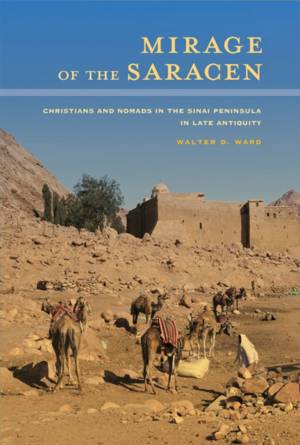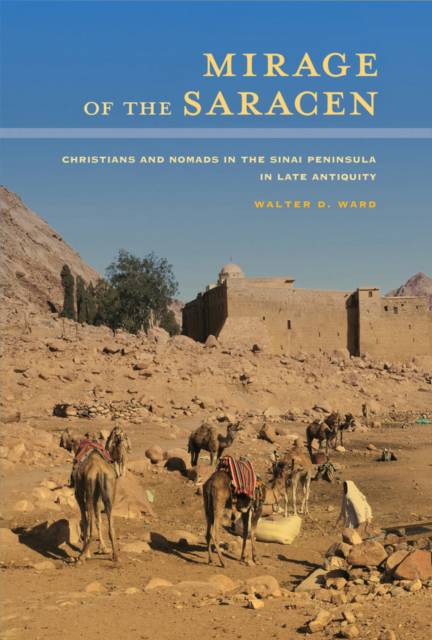
Door een staking bij bpost kan je online bestelling op dit moment iets langer onderweg zijn dan voorzien. Dringend iets nodig? Onze winkels ontvangen jou met open armen!
- Afhalen na 1 uur in een winkel met voorraad
- Gratis thuislevering in België vanaf € 30
- Ruim aanbod met 7 miljoen producten
Door een staking bij bpost kan je online bestelling op dit moment iets langer onderweg zijn dan voorzien. Dringend iets nodig? Onze winkels ontvangen jou met open armen!
- Afhalen na 1 uur in een winkel met voorraad
- Gratis thuislevering in België vanaf € 30
- Ruim aanbod met 7 miljoen producten
Zoeken
Mirage of the Saracen
Christians and Nomads in the Sinai Peninsula in Late Antiquity Volume 54
Walter D Ward
€ 110,45
+ 220 punten
Omschrijving
Mirage of the Saracen analyzes the growth of monasticism and Christian settlements in the Sinai Peninsula through the early seventh century C.E. Walter D. Ward examines the ways in which Christian monks justified occupying the Sinai through creating associations between Biblical narratives and Sinai sites while assigning uncivilized, negative, and oppositional traits to the indigenous nomadic population, whom the Christians pejoratively called "Saracens." By writing edifying tales of hostile nomads and the ensuing martyrdom of the monks, Christians not only reinforced their claims to the spiritual benefits of asceticism but also provoked the Roman authorities to enhance defense of pilgrimage routes to the Sinai. When Muslim armies later began conquering the Middle East, Christians also labeled these new conquerors as Saracens, connecting Muslims to these pre-Islamic representations. This timely and relevant work builds a historical account of interreligious encounters in the ancient world, showing the Sinai as a crucible for forging long-lasting images of both Christians and Muslims, some of which endure today.
Specificaties
Betrokkenen
- Auteur(s):
- Uitgeverij:
Inhoud
- Aantal bladzijden:
- 224
- Taal:
- Engels
- Reeks:
- Reeksnummer:
- nr. 54
Eigenschappen
- Productcode (EAN):
- 9780520283770
- Verschijningsdatum:
- 17/12/2014
- Uitvoering:
- Hardcover
- Formaat:
- Genaaid
- Afmetingen:
- 158 mm x 231 mm
- Gewicht:
- 444 g

Alleen bij Standaard Boekhandel
+ 220 punten op je klantenkaart van Standaard Boekhandel
Beoordelingen
We publiceren alleen reviews die voldoen aan de voorwaarden voor reviews. Bekijk onze voorwaarden voor reviews.











